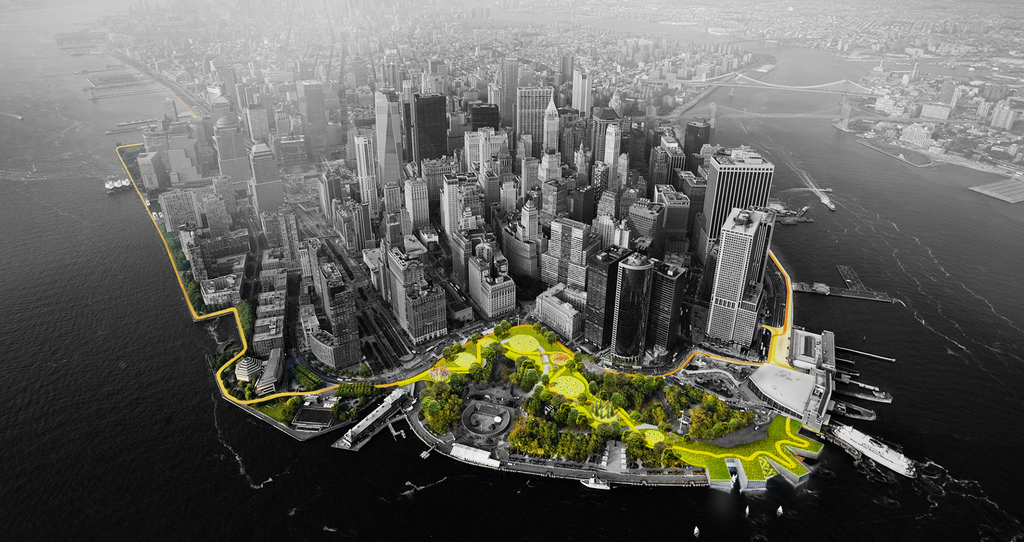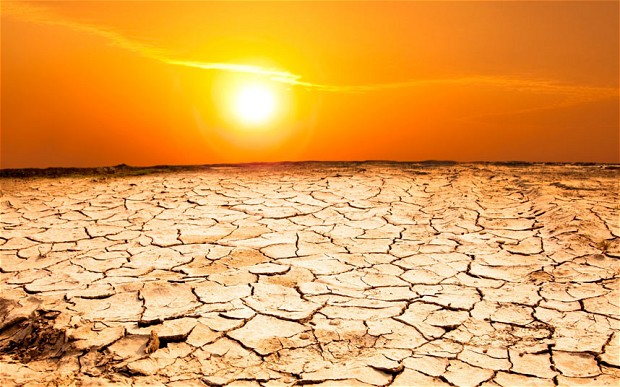
Preparation. It could be getting ready for violent storm surges. Or facing the prospect of months without a rain cloud in sight. Preparations to deal with billion-dollar floods and catastrophic water shortages come in the form of studies to understand the conditions, plans to use and protect resources, and infrastructure to guard and grow our cities and towns. To this end, public agencies are looking to the AEC industry for help. IMS has published 5,748 water resource-related projects in the last 12 months, up 19% from the previous 12 month period.
Part I: …From Floods
Recent flooding has been catastrophic to large urban centers and small towns alike. When the waters recede, questions arise. How did this happen? How can it be prevented from happening again? The AEC industry steps in to find answers. The tools of the trade include hydrologic and hydraulic modeling, aerial photography, risk assessments, and surveys of rainfall and topography.
“With annual costs averaging billions of dollars, focus on the identification and assessment of risk and exposure to hydrologic hazards is critical to the national strategy for building safer communities,” according to the Federal Emergency Management Agency.
IMS publishes Advance Notices of upcoming AEC opportunities related to these studies and plans, as well as current Requests for Proposals/Qualifications. For example, IMS covered the RFP when the Parish of Plaquemines, Louisiana sought a consultant to prepare updated flood hazard maps (IMS No. 285416). And recently in Aberdeen, Washington, the County of Grays Harbor published an RFQ for a consultant to conduct a comprehensive study to reduce flooding for Wishkah Road (IMS No. 337030).
Those studies can help to define a threat, and show a way forward. This can include design services for a specific flood control project or, for example, an RFP from the State of Pennsylvania to provide geotechnical engineering services for the evaluation and design of dams and flood protection structures (IMS No. 311352).
In a more holistic approach, the way forward includes updated design standards and features that can be incorporated into new infrastructure. Large detention ponds and channels that double as park and habit space are a forward-looking example in Texas. Green parking lots that minimize impervious surfaces “can help significantly reduce detrimental environmental effects and infrastructure burden from stormwater runoff,” according to the US Environmental Protection Agency. Rain gardens can also be designed to manage stormwater runoff, noted an article in The Times-Picayune. Green roofs, permeable pavements, and bioswales may sound like a drop in the bucket, but they can be an effective local solution and used on a larger scale for major infrastructure projects.
IMS sees these elements in many proposed projects and RFP/RFQs. For example, the District of Columbia Water and Sewer Authority recently sought a design build consultant for a project in Rock Creek with bioretention features in street planters/curb extensions and permeable pavement in alleys and parking lanes (IMS No. 334212).
Major Projects
There are studies, plans and environmentally friendly “best practices,” in the discipline of flood control engineering. And then there are storms that hit like a nuclear bomb. Billion-dollar infrastructure projects to develop resiliency are the proportional response.
When Superstorm Sandy hit in 2012, it brought flooding and destruction across the eastern seaboard. The storm surge and rains that inundated Lower Manhattan and Brooklyn caused billions of dollars in damage. There were recovery projects as well as a design competition for projects to mitigate future disasters and sea-level-rise scenarios.
New York City will soon begin work on the East Side Coastal Resiliency Project, a combination of berms, floodwalls, and deployable elements within existing City parkland and streets.
“It’s the first part of a bigger barrier system, known informally as ‘the Big U,’ that someday may loop around the entire bottom of Manhattan, from 42nd Street on the East Side to 57th Street on the West Side,” wrote Jeff Goodell in a recent Rolling Stone article.
Goodell noted that coastal cities throughout the world are protected by various types of sea walls. He also cited the vital role of massive levees in New Orleans and the walls, dikes, and levees of the Netherlands.
“Almost every coastal city in the world is vulnerable to sea-level rise, but nowhere is there more at stake than in New York,” Goodell wrote. “[The ‘Big U’] project in Lower Manhattan is the headliner, not just because the City may spend $3 billion or more to construct it, but also because Lower Manhattan is some of the most valuable real estate on the planet – if it can’t be protected, then New York is in deep trouble.”
For projects of this magnitude, IMS tracks a range of planning (IMS No. 324936), design (IMS No. 344077), and engineering services (IMS No. 354454).
Part II: …To Shortages of Water Supplies
The other side of this coin is the water supply issue. For every Parish in Louisiana that is besieged by rain, there is a County in California dealing with a crippling drought.
Here, too, the foundation is laid with studies and plans; this time it is for the management of aquifers and other resources. A/E/C studies related to water supply include Urban Water Management Plans, Groundwater Plans, Basin Management Plans, Demand Management Studies, and Groundwater Development Augmentation Plans. IMS has been tracking consulting services for Drought Contingency Plans in Oregon, California, and Washington State.

Design standards and best practices are being developed to deal with drought conditions, just like they were used to deal with excess stormwater. Landscape architects are increasingly called upon to incorporate drought-tolerant plant palettes for street median islands or Urban Greening Master Plans (IMS No. 308369). Turf conversion programs require consultants to prepare landscape and irrigation guidelines for water-wise plantings (IMS No. 313962).
Major Projects
Water supply infrastructure projects come in many shapes and sizes. They are a mixture of brute force (huge water storage reservoirs), an enhanced natural process (groundwater recharge), innovation (recycled water), and scientific advancement (desalination facilities).
The University of California, Davis, noted that two large water storage dams are being considered in California: Temperance Flat on the San Joaquin River and Sites Reservoir in Colusa County. “Together these projects would add 3.1 million acre-feet to approximately 41 million acre-feet of existing surface storage in the state at an estimated cost of $6.4 billion,” UC Davis reported. (However, researchers emphasize that surface storage is “not a cure-all in economic or environmental terms.”)
Reservoirs store water aboveground, but another method of storage is to recharge aquifers through groundwater storage via injection wells and recharge ponds. However, when river and stream flows are not available, what will the source be? Stanford University has some answers. “…Increasingly, alternative sources of water are being used for recharge as water becomes more scarce. What were formerly seen as liabilities – treated wastewater, stormwater, and agricultural runoff – are now all starting to be used for recharge,” the University reported.
Another element of sustainable water management strategies is recycled water. “Water recycling is reusing treated wastewater for beneficial purposes such as agricultural and landscape irrigation, industrial processes, toilet flushing, and replenishing a ground water basin,” said the US Environmental Protection Agency. “Recycled water is most commonly used for nonpotable (not for drinking) purposes, such as agriculture, landscape, public parks, and golf course irrigation.”
However, the State of California is studying the possibility of direct potable reuse, and in September 2016 published a draft report on the feasibility of developing those regulations. “We need to take a thoughtful and deliberate approach to diversifying and securing our long-term water resilience,” said State Water Board Chair Felicia Marcus. “Today’s draft, focused on the feasibility of direct potable reuse, is one part of a multifaceted effort that includes a wide range of sources, including indirect potable reuse through groundwater recharge, surface water augmentation, stormwater capture, and desalination. The release of today’s draft report is a historic step in bringing online a potential future source of potable water.”
Desalination projects that turn salt or brackish water into freshwater are catching on the United States. These projects must overcome the hurdles of high energy costs, disposal of salty waste, and impacts to marine life. But today’s water demands are making these projects appear more viable. IMS has been tracking desalination projects in Texas (IMS No. 296265), California (IMS No. 333547), and Florida (IMS No. 296391). Proponents of this technology, such as Poseidon Water, say that desalination plants provide a “locally controlled, drought-proof supply of drinking water.”
Resilience “from Floods to Shortages”
Powerful storms and sea-level changes will require innovative design solutions to protect communities. Finding water supplies in prolonged droughts will demand of combination of solutions, and attention to long-term sustainability. Through studies, plans, and project designs, the AEC industry is helping communities to build resilience – to the damages caused by floods as well as from challenges to a secure water supply.

